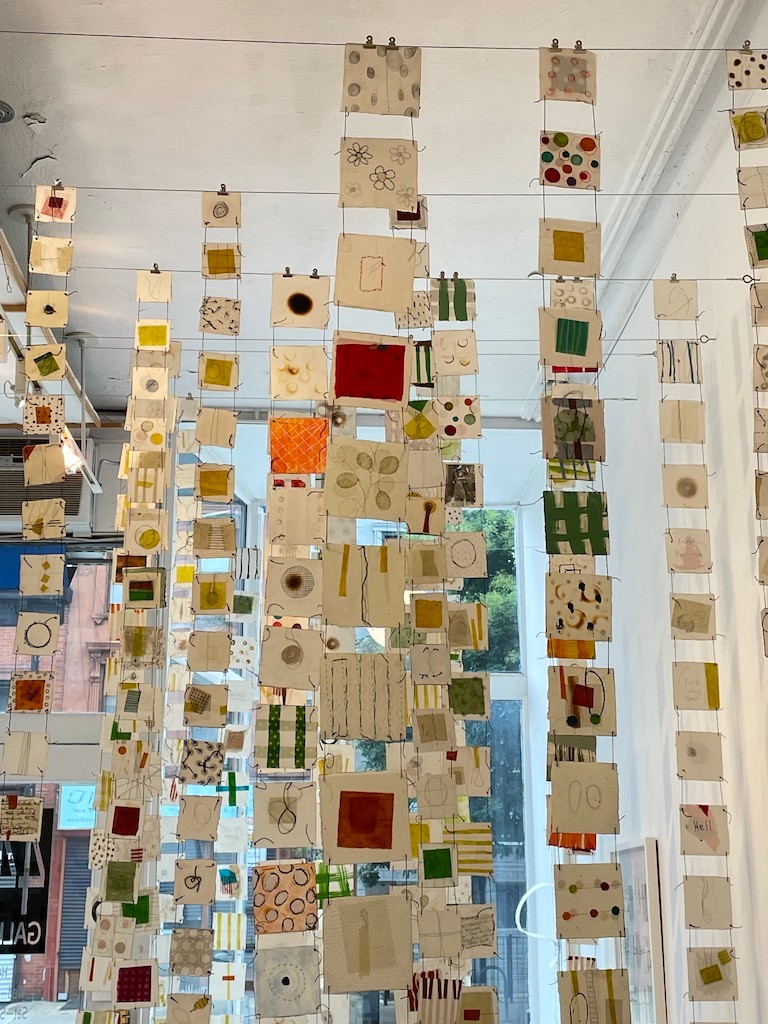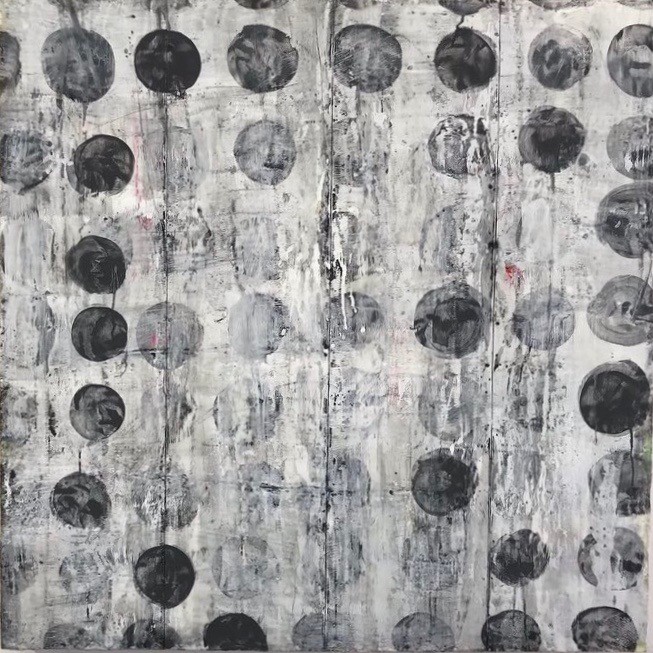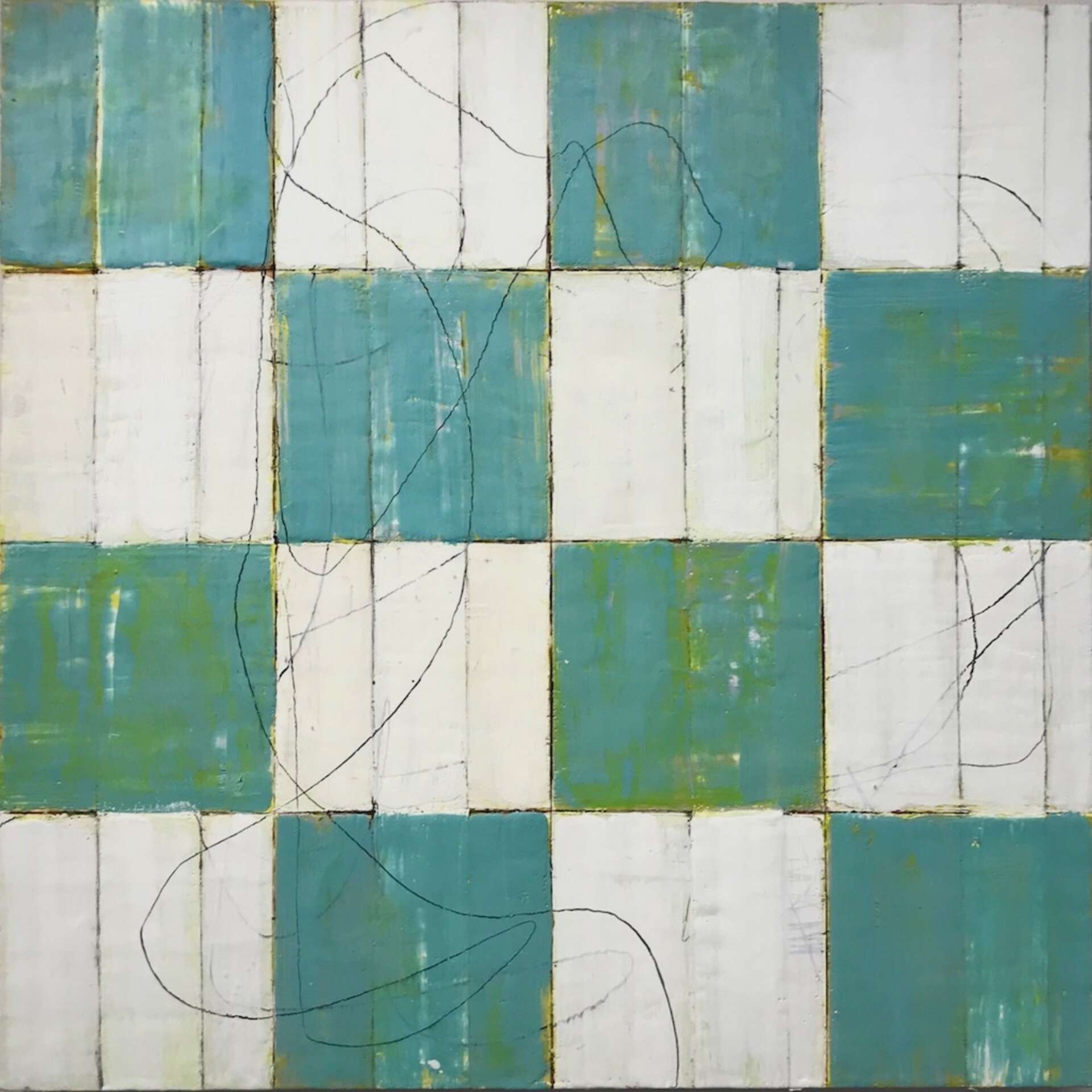We’re excited to introduce you to the always interesting and insightful Amy Weil. We hope you’ll enjoy our conversation with Amy below.
Hi Amy, thanks for joining us today. How did you learn to do what you do? Knowing what you know now, what could you have done to speed up your learning process? What skills do you think were most essential? What obstacles stood in the way of learning more?
When I was an art student at Tyler School of Art, I was working primarily in oil paint. I loved the medium and the wonderful fluidity and viscosity of oils but was always frustrated with the slow drying time. There were a couple of students there who were working in encaustic and I admired their work, but I continued to explore oils to push my ideas. It wasn’t until many years later, that I began to use encaustic paint. One of my favorite artists that I was looking at during this time was Jasper Johns. I fell in love with his flag paintings and the way he used wax to achieve the wonderfully textured surfaces in his works. On a whim. I bought some panels, encaustic paints and all the necessary tools that you need to work with encaustic. It is quite an investment! My first few paintings were a mess and so I took a couple of workshops with some great encaustic instructors. They gave me very helpful tips and techniques for using wax pigments, which included making sure each layer is fused properly to the previous layer. I learned to use a heat gun and a torch to properly achieve the desired results. This medium was and still is perfect for me because there is virtually no drying time involved and it allows me to work in a more intuitive and playful way. I spent about 10 years mastering my technique and creating a voice that is uniquely my own. I do not regret the circuitous route I took discovering encaustic because I grew as an artist along the way. It was through oils, that I learned about color theory, composition and brushwork which give my encaustic painting more depth.


Amy, love having you share your insights with us. Before we ask you more questions, maybe you can take a moment to introduce yourself to our readers who might have missed our earlier conversations?
I am an artist who works mainly in encaustic but I also create art installations using mixed media. I often paint in series and each is dependent on an emotional response to my environment and what is going on in the world. My last series was titled, Clothesline. Each painting was a dress on a line that represented the person who wore that dress. It was both poignant and whimsical. I also have a series of paintings that I call circles and grids. I often start with a grid and add very playful and buoyant circles that juxtapose the rigid structure of the grid with more playful and organic shapes. I love to use gestural drawing as well as a counter point to the grid.
The installation that I am most proud of was at 440 Gallery in Brooklyn in 2021.
The show, called Burnt Offerings, was a response to the Covid pandemic. I created over 600 small drawings on burnt waxed paper that represented the 600,000 people who died in the United States alone. The pieces were strung up and hung from the gallery ceiling creating a play of light and shadow.


How about pivoting – can you share the story of a time you’ve had to pivot?
My art has never had a linear trajectory. My life and art have taken a more circuitous route which, in retrospect, has been a good thing for my development as an artist. I grew up in a very dysfunctional home and so had to deal with a lot of insecurity and anxiety for much of my life. I always wanted to be an artist but never felt like I was good enough. I went to art school in Philadelphia, but I dropped out after a year and got a job as a prep/ line cook. During this time, I also went into therapy and played around with the idea of becoming a psycho-therapist. After a couple of years of commuting to New York to study at the Modern Psycho-analytic Institute I knew that was not the career for me and I understood that at my core, I am first and foremost an artist. That being said, it was a great experience and taught me a lot about myself. I became a stronger and more confident person. So, when I finally returned to art school at Tyler School of Art in Philadelphia, I graduated with a BFA in painting. That journey and those experiences have become an integral part of who I am as an artist.


What do you find most rewarding about being a creative?
For me, the most rewarding part of being an artist is that you get to get up every day and paint! For many years, I worked as a preschool teacher during the week and went to my studio in the afternoons and weekends. I looked forward to having the summers off and holidays to be in the studio and hated to leave my studio when it was time to return to teaching. It felt exhausting to juggle both jobs and when I finally was able to retire and spend everyday at the studio it was such a gift. I look forward to waking up everyday and going to my studio. Once in my studio, the discipline is to keep working even when you are not inspired to paint because it is in these moments of pushing through resistance when the most exciting things happen in the work and keeps me interested in the process.


Contact Info:
- Website: www.amyweilpaintings.com
- Instagram: https://www.instagram.com/circles_and_grids/?hl=en
- Facebook: https://www.facebook.com/photo/?fbid=10223946557153665&set=a.2445226451908


